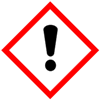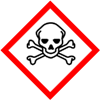| Anmol Chemicals is the pioneer manufacturers of Cobalt Molybdate, Pharmaceutical Excipients Chemicals in India. We offer Halal and Kosher Cobalt Molybdate made in an ISO9001, ISO22000 (FSSC22000) and cGMP certified facility. Our group has several manufacturing facilities spread across the world, supported by toll manufacturers and representatives in UAE, Europe, Africa, USA, China and has several associated manufacturing facilities spread across India. All the Information on Physics, Chemistry, Applications, Uses and Technology on Manufacture of Cobalt Molybdate is in these pages. |
| The units have one or more of the certifications like FDA GMP, ISO 9001, ISO 22000, HACCP, REACH, Kosher & Halal |





Cobalt Molybdate Manufacturers
Properties and Specifications of Cobalt Molybdate SDS of Manufacturers Suppliers Exporters
Molybdic Acid Cobalt Salt or Cobalt Molybdate SDS, Safety Data Sheet
MSDS Sheet, Material Safety Data Sheet
Section 1: Product and Company Identification
Product Name & Other Names: Molybdic Acid Cobalt Salt or Cobalt Molybdate.
CAS No.: 53027-14-8 (also 13762-14-6)
EINECS, EC Number: --
Molecular Weight: 220.82
Chemical Formula: CoMoO4
Relevant uses and uses advised against (if any): Laboratory chemicals, Manufacture of substances
Section 2: Hazards Identification
GHS, Globally Harmonized System Classification in accordance with 29 CFR 1910
Classification according to Regulation (EC) No 1272/2008
Acute toxicity, oral Category 3, H301
Skin sensitization (Category 1), H317
Serious eye damage/eye irritation Category 2A, H319
Specific target organ toxicity, single exposure; Respiratory tract irritation Category 3 H335
Carcinogenicity Category 2H351
Labeling according to GHS & Regulation (EC) No 1272/2008
GHS Label Elements  Irritant |
GHS Label Elements |
GHS Label Elements |
Signal Words: Danger
Hazard statements:
H301: Toxic if swallowed.
H317: May cause an allergic skin reaction.
H319: Causes serious eye irritation.
H335: May cause respiratory irritation.
H351: Suspected of causing cancer.
Precautionary statements:
P202: Do not handle until all safety precautions have been read and understood.
P260: Do not breathe dust/fume/gas/mist/vapors/spray.
P264 Wash thoroughly after handling.
P270: Do not eat, drink or smoke when using this product.
P271: Use only outdoors or in a well-ventilated area.
P280: Wear protective gloves/protective clothing/eye protection/face protection.
P362: Take off contaminated clothing and wash before reuse.
P330 : Rinse mouth
P301+P312: IF SWALLOWED: Call a POISON CENTER or doctor/ physician if you feel unwell.
P302+P352: IF ON SKIN: Wash with plenty of soap and water.
P304+341: IF INHALED: If breathing is difficult, remove victim to fresh air and keep at rest in a position comfortable for breathing.
P305+P351+P338: IF IN EYES: Rinse cautiously with water for several minutes. Remove contact lenses, if present and easy to do. Continue rinsing.
P308+313: IF exposed or concerned: Get medical advice/attention.
P337+313: If eye irritation persists get medical advice/attention.
P333+313: If skin irritation or a rash occurs: Get medical advice/attention.
P342+311: If experiencing respiratory symptoms: Call a POISON CENTER or doctor/physician.
P391: Collect spillage.
P405: Store locked up.
P501: Dispose of contents/container in accordance with local/regional/national/international regulation.
Classification according to EU Directives 67/548/EEC or 1999/45/EC:
Hazard Symbol:
T Toxic
Xi Irritant.
Risk Phrase:
R25 Toxic if swallowed.
R36/37 Irritating to eyes and respiratory system.
R43 May cause sensitization by skin contact.
R45 May cause cancer.
Section 3: Composition / Information on Ingredients
Product Name & Other Names: Molybdic Acid Cobalt Salt or Cobalt Molybdate.
CAS No.: 53027-14-8 (also 13762-14-6)
EINECS, EC Number: --
Section 4: First Aid Measures
Always seek medical attention after first aid measures are provided.
Eyes: Immediately flush eyes with excess water for 15 minutes, lifting lower and upper eyelids occasionally.
Skin: Immediately flush skin with excess water for 15 minutes while removing contaminated clothing.
Ingestion: Call Emergency Medical immediately. Rinse mouth with cold water. Give victim 1-2 cups of water or milk to drink. Induce vomiting immediately.
Inhalation: Remove to fresh air. If not breathing, give artificial respiration.
Section 5: Fire Fighting Measures
It is non-flammable solid. When heated to decomposition it may emits fumes.
Protective equipment and precautions for firefighters: Use foam or dry chemical to extinguish fire. Firefighters should wear full fire fighting turn-out gear and respiratory protection. Cool container with water spray. Material is not sensitive to impact or static discharge.
Special hazards arising from the substance: Molybdenum oxides, Cobalt oxides.
Special Information: In the event of a fire, wear full protective clothing and NIOSH-approved self-contained breathing apparatus with full face piece operated in the pressure demand or other positive pressure mode. At high temperatures under fire conditions, it may produce toxic or irritating fumes. Fire-extinguishing work is done from the windward and the suitable fire-extinguishing method according to the surrounding situation is used. Uninvolved persons should evacuate to a safe place.
Section 6: Accidental Release Measures
Personal precautions, protective equipment, and emergency procedures: Avoid breathing dust/fumes/gas/mist/vapors/spray. Use individual protective equipment (waterproof boots, suitable protective clothing, safety glasses, etc.). Restrict unprotected personnel from the area. Prevent any contact with hot surfaces. Do not approach facing the wind. Do not touch the spilled material.
Environmental precautions: Do not let the product enter drains, soil, or water sources.
Methods and materials used for containment Cleanup procedures and Storage: Do not inhale dust, vapors, mist, or gas. Avoid dust formation. Contain spilled material. Cover with an inert, non-combustible absorbent material, (e.g. sand, earth, diatomaceous earth, vermiculite). Use a shovel to put the material into a convenient waste disposal container. Finish cleaning by spreading water on the contaminated surface and allow to evacuate as per law.
Section 7: Handling and Storage Green
Precautions for safe handling: Apply according to good manufacturing and industrial hygiene practices. Ensure proper ventilation. In case of insufficient ventilation, wear suitable respiratory equipment. Wash thoroughly after handling. Do not drink, eat, or smoke while handling. Avoid contact with skin, eyes, and clothing. Minimize dust generation. Avoid breathing dust/fumes/gas/mist/vapors/spray. Avoid contact with eyes, skin, and clothing. Keep container tightly closed. Avoid ingestion and inhalation. Use individual protective equipment (waterproof boots, suitable protective clothing, safety glasses, etc.). Prevent any contact with hot surfaces.
Conditions for safe storage, including any incompatibilities: Store in cool, dry, and ventilated area away from heat sources and protected from sunlight in tightly closed original container. Keep air contact to a minimum. Store protected from heat, sparks and ignition sources and incompatible materials. Avoid contact with skin and eyes. Avoid inhalation of dust/mist/vapor. Do not store with incompatible materials like strong oxidizing agents.
Section 8: Exposure Controls / Personal Protection
Exposure guidelines:
ACGIH: TLV: 0.02 mg/m3 (Listed under cobalt, inorganic compounds).
Ventilation System: A system of local and/or general exhaust is recommended to keep employee exposures as low as possible. Local exhaust ventilation is generally preferred because it can control the emissions of the contaminant at its source, preventing dispersion of it into the general work area.
Personal Respirators (NIOSH Approved): For conditions of use where exposure to dust or mist is apparent and engineering controls are not feasible, a particulate respirator may be worn. For emergencies or instances where the exposure levels are not known, use a full-face positive-pressure, air-supplied respirator.
Skin Protection: Wear protective gloves and clean body-covering clothing.
Eye Protection: Use chemical safety goggles and/or full face shield where dusting or splashing of solutions is possible. Maintain eye wash fountain and quick-drench facilities in work area.
Other Control Measures: Maintain good housekeeping in work area. Dust deposits on floors and other surfaces may pick up moisture and cause the surfaces to become slippery and present safety hazards. Handle in accordance with good industrial hygiene and safety practice. Wash hands after handling.
Section 9: Physical and Chemical Properties
Physical state and appearance: Pinkish or red solid (Crystals or Powder).
Odor: Not available.
Odor threshold: Not available.
pH: Not available.
Relative density: Not available.
Melting point/freezing point: Not available.
Initial boiling point and boiling range: Not available.
Flash point: Not available.
Auto-ignition temperature: Not available.
Decomposition temperature: Not available.
Upper/lower flammability or explosive limits: Not available.
Vapor pressure: Not available.
Vapor density: Not available.
Evaporation rate: Not available.
Flammability (solid, gas): Not available.
Partition coefficient: n-octanol/water: Not available.
Solubility(ies): Not available.
Viscosity: Not available.
Section 10: Stability and Reactivity
Avoid heat and ignition sources.
Stability: Stable under normal conditions of use and storage.
Incompatibility: Heat and strong oxidizing agents.
Hazardous Decomposition Products: Cobalt oxides and Molybdenum oxides.
Hazardous Polymerization: Has not been reported.
Section 11: Toxicology Information
LD50 [oral, rat]; Not available.
May affect genetic material (mutagenic). Presumed human reproductive toxicant.
Carcinogenicity: Group 2B: Possibly carcinogenic to humans by IARC.
Presumed human reproductive toxicant.
To the best of our knowledge, the toxicological properties have not been thoroughly investigated.
Section 12: Ecological Information
Toxicity to fish: Not available.
Toxicity to daphnia and other aquatic invertebrates: EC50 - Not available.
Ecotoxicity (aquatic and terrestrial): Contains a heavy metal – toxic to terrestrial and aquatic plants and animals. Do not release to environment.
Results of PBT and vPvB assessment: Not available.
Section 13: Disposal Considerations
Check with all applicable local, regional, and national laws and regulations.
Section 14: Transport Information
DOT USA, TDG Canada & ADR/RID Europe:
UN-No: UN3077
Proper Shipping Name: ENVIRONMENTALLY HAZARDOUS SUBSTANCE, SOLID, N.O.S.
Proper technical name: Cobalt Molybdate.
Hazard Class: 9; Packing Group: III
IATA/ICAO
UN-No: UN3077
Proper Shipping Name: ENVIRONMENTALLY HAZARDOUS SUBSTANCE, SOLID, N.O.S.
Proper technical name: Cobalt Molybdate.
Hazard Class: 9; Packing Group: III
IMDG/IMO
UN-No: UN3077
Proper Shipping Name: ENVIRONMENTALLY HAZARDOUS SUBSTANCE, SOLID, N.O.S.
Proper technical name: Cobalt Molybdate.
Hazard Class: 9; Packing Group: III
Section 15: Regulatory Information
USA:
SARA 311/312 Hazard Categories: Acute Health Hazard, Chronic Health Hazard. See section 2.
California Proposition 65: Chemicals known to cause cancer.
Section 16: Other Information
European Labeling in Accordance with EC Directives:
H301: Toxic if swallowed.
H317: May cause an allergic skin reaction.
H319: Causes serious eye irritation.
H335: May cause respiratory irritation.
H351: Suspected of causing cancer.
Disclaimer:
**************************
Our company provides this MSDS sheet in good faith but makes no representation as to its comprehensiveness or accuracy. This Cobalt Molybdate SDS sheet is intended only as a guide to the appropriate precautionary handling of the material by a properly trained person using this product. The above information has been compiled from various sources and has the possibility of discrepancy and being out-dated information. Individuals receiving the information must exercise their independent judgment and do further search in determining its appropriateness for a particular purpose. In no case shall our company be liable to loss or damages by the product user.
**************************
Cobalt Molybdate Manufacturers:
Anmol Chemicals
S-8, SARIFA MANSION, 2ND FLANK ROAD, CHINCHBUNDER, MUMBAI 400009, INDIA
TEL: (OFFICE) 91-22-23770100, 23726950, 23774610, 23723564. FAX: 91-22-23728264
e-mail: anmolc@mtnl.net.in

Exports to USA, Canada, UAE, Dubai, South Africa, Tanzania, Kenya, Nigeria, Egypt, Uganda, Turkey, Mexico, Brazil, Chile, Argentina, Europe Netherlands, Italy, Spain, Germany, Portugal, France, Malaysia, Indonesia, Thailand, Korea, Vietnam, Japan, etc.
Copyright and Usual Disclaimer is Applicable 29 December, 2021

